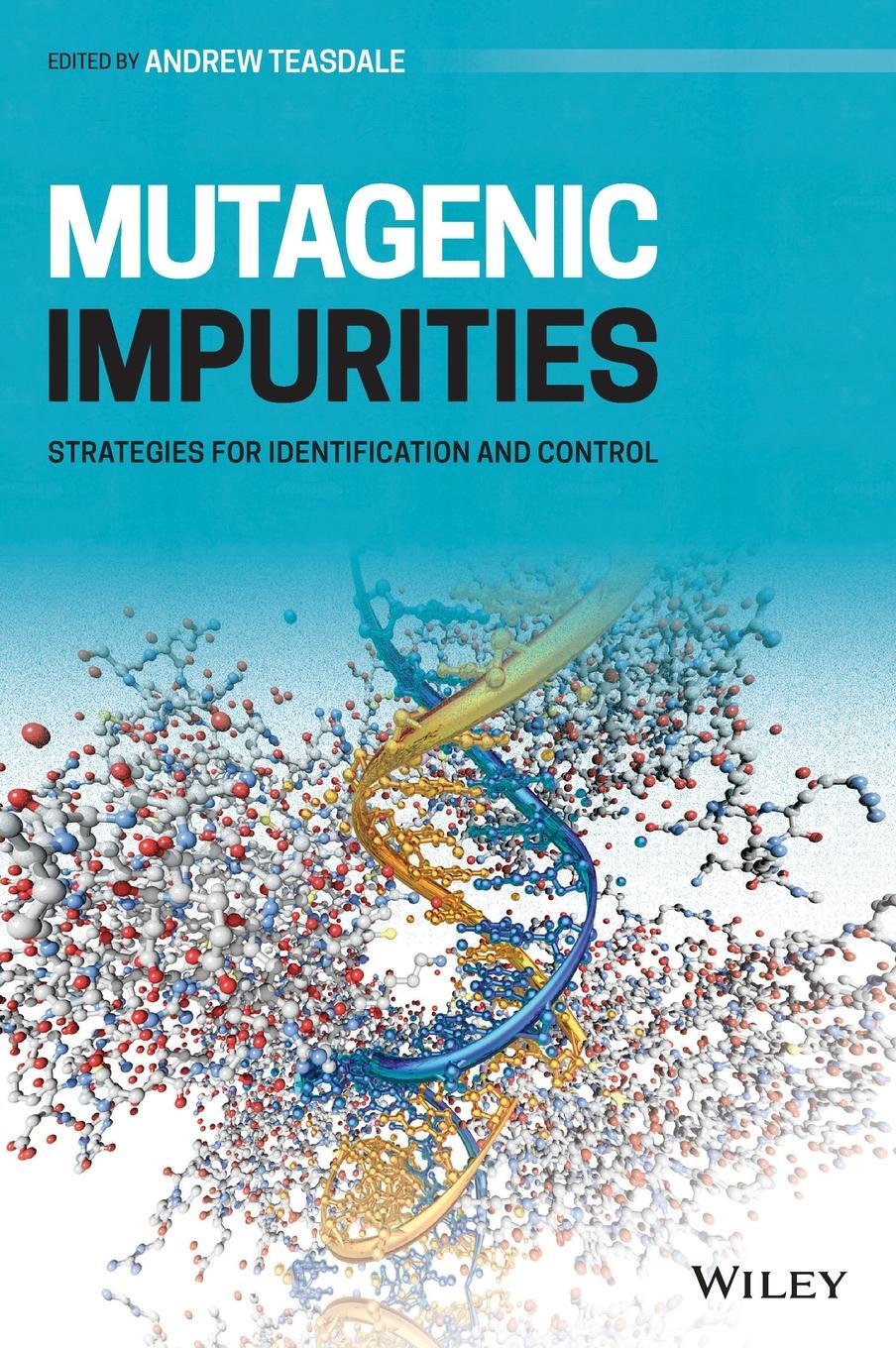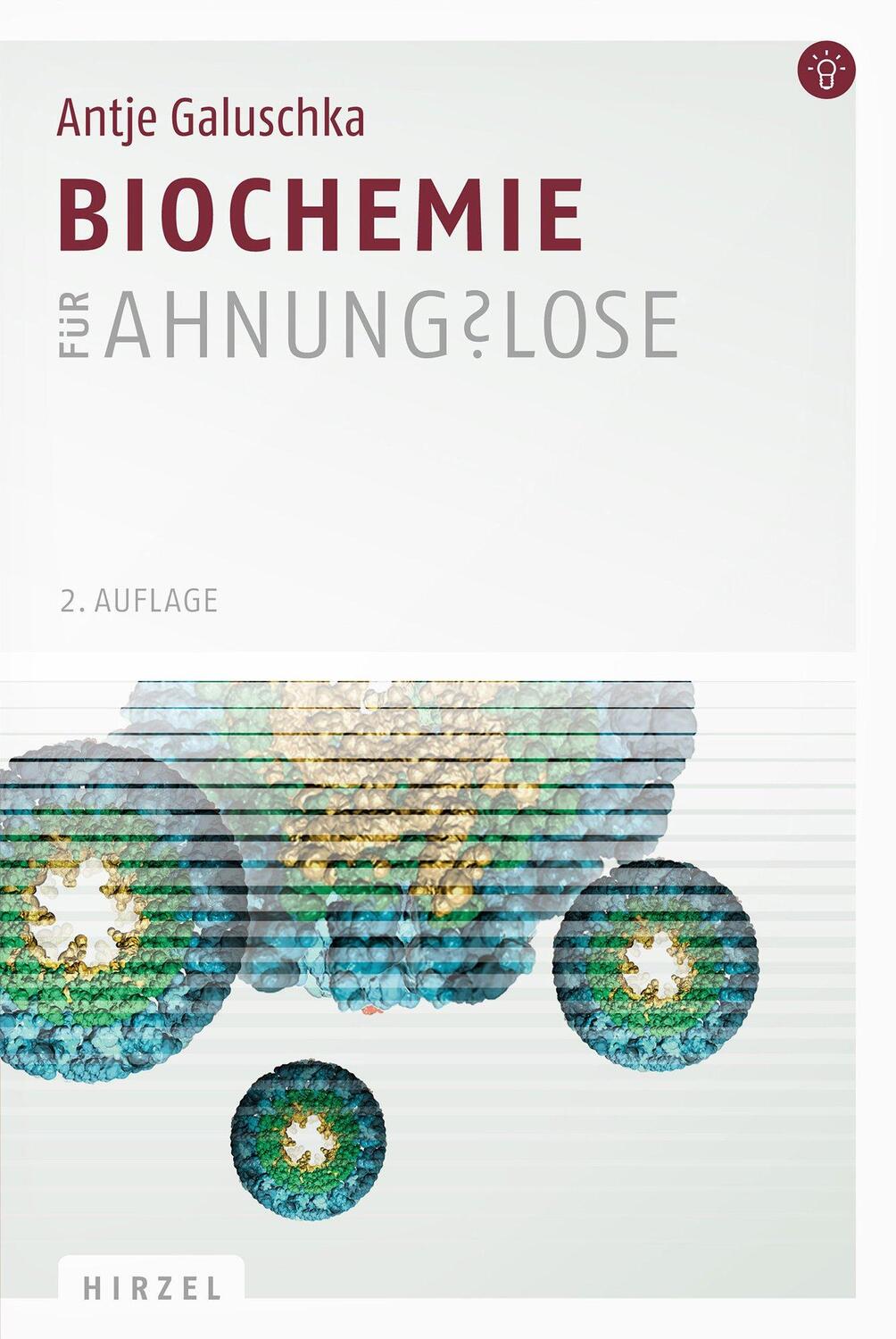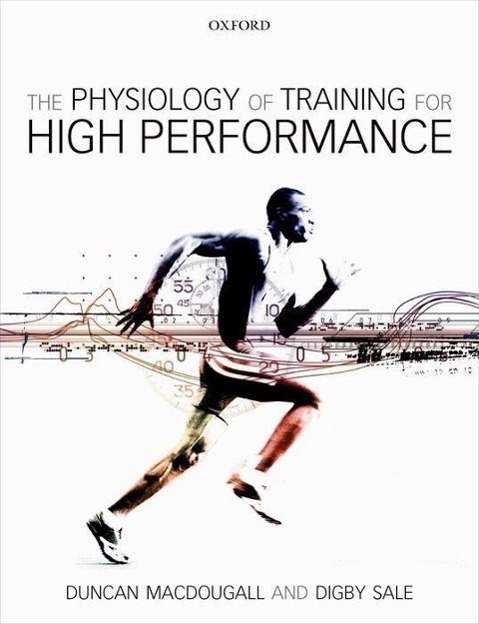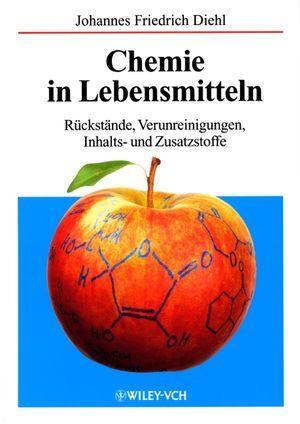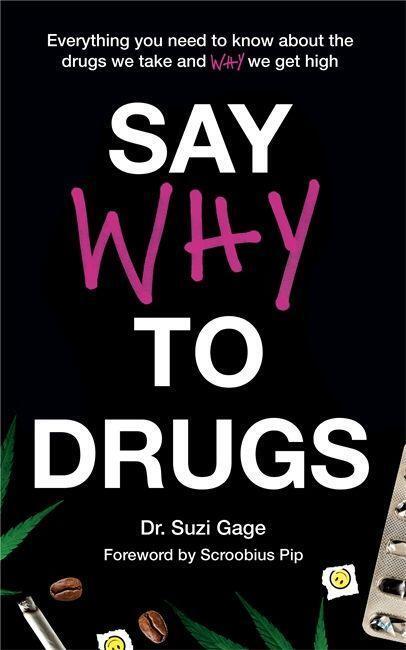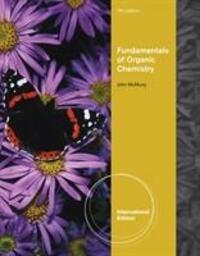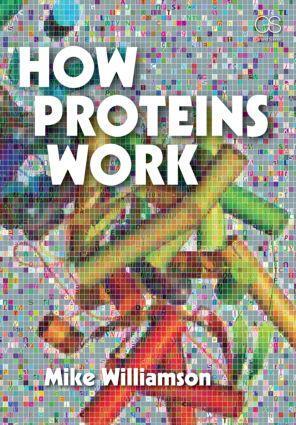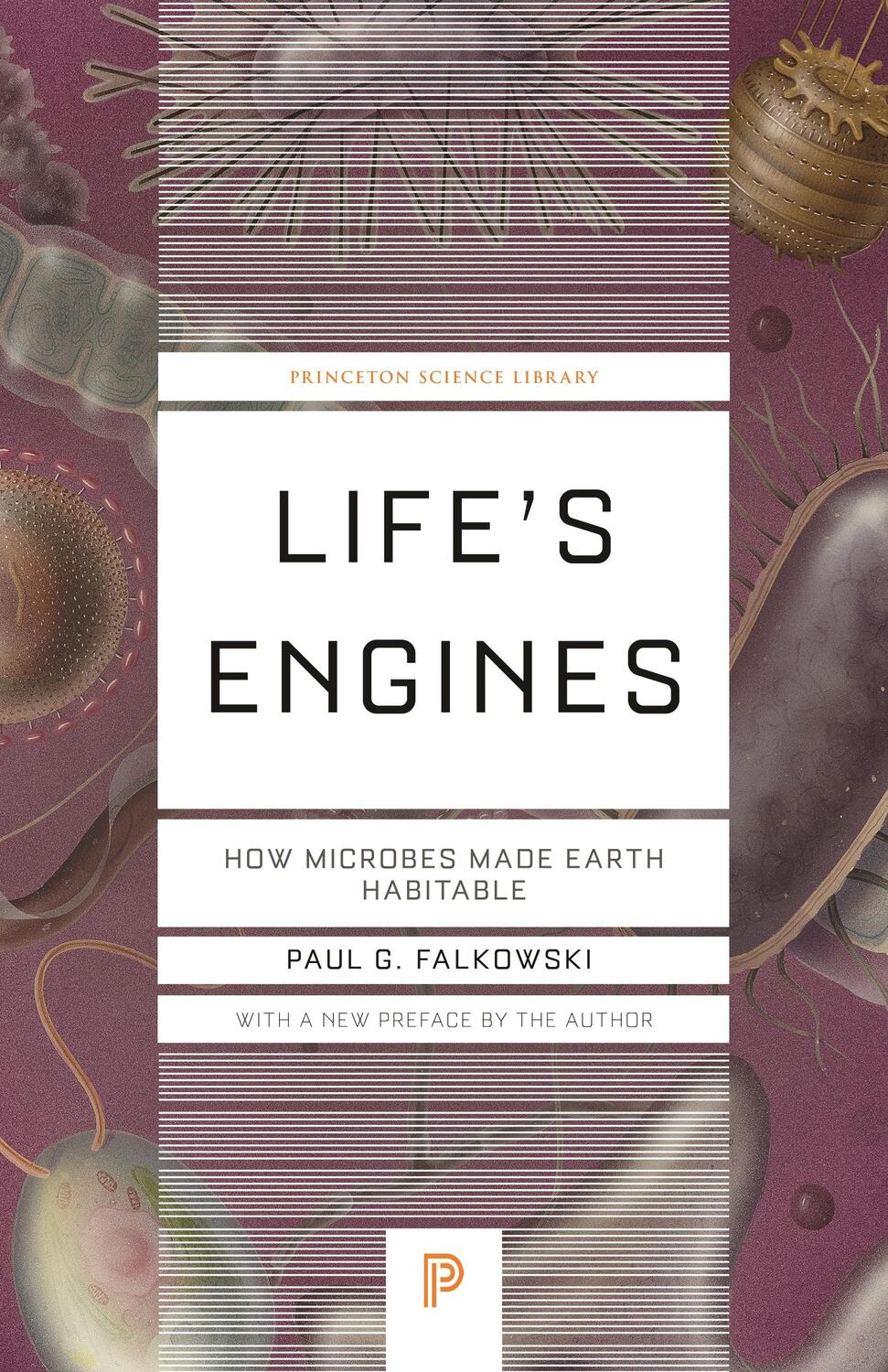241,50 €*
Versandkostenfrei per Post / DHL
Aktuell nicht verfügbar
Andrew Teasdale, PhD, is a senior principal scientist with AstraZeneca and a member of ICH Q3C, Q3D, Q3E Expert working groups as well as an industry advisor to ICH M7. He received his doctorate in organic chemistry from Durham University. He is the inventor of the purge factor concept applied to risk assessment of mutagenic impurities and has authored over 30 papers on that subject.
Preface xxi
Section 1 The Development of Regulatory Guidelines for Mutagenic/Genotoxic Impurities - Overall Process 1
1 Historical Perspective on the Development of the EMEA Guideline and Subsequent ICH M7 Guideline 3
Andrew Teasdale
1.1 Introduction 3
1.1.1 CPMP - Position Paper on the Limits of Genotoxic Impurities -2002 4
1.1.1.1 Scope/Introduction 4
1.1.1.2 Toxicological Background 4
1.1.1.3 Pharmaceutical (Quality) Assessment 4
1.1.1.4 Toxicological Assessment 4
1.1.2 Guideline on the Limits of Genotoxic Impurities - Draft June 2004 5
1.1.3 PhRMA (Mueller) White Paper 6
1.1.4 Finalized EMA Guideline on the Limits of Genotoxic Impurities - June 2006 8
1.1.4.1 Issues Associated with Implementation 9
1.1.4.2 Control Expectations for Excipients 11
1.1.4.3 Control Expectations for Natural/Herbal Products 12
1.1.4.4 Identification of Potential Impurities 12
1.1.4.5 The Principle of Avoidance 12
1.1.4.6 The ALARP Principle 14
1.1.4.7 Overall 14
1.1.5 SWP Q&A Document 14
1.1.5.1 The Application of the Guideline in the Investigational Phase and Acceptable Limits for GIs Where Applied to Studies of Limited Duration 14
1.1.5.2 Application of the Guideline to Existing Products 15
1.1.5.3 Avoidance and ALARP 17
1.1.5.4 ICH Identification Threshold and its Relation to MI Assessment 17
1.1.6 FDA Draft Guideline 17
1.1.7 Other Relevant Guidance 17
1.1.7.1 Excipients 18
1.1.8 Herbals 18
1.1.9 ICH S9 18
1.1.10 Conclusions 19
References 19
2 ICH M7 - Assessment and Control of DNA Reactive (Mutagenic) Impurities in Pharmaceuticals to Limit Potential Carcinogenic Risk 21
Andrew Teasdale and Raphael Nudelman
2.1 Introduction 21
2.2 ICH M7 22
2.2.1 Introduction 22
2.2.2 Scope 22
2.2.2.1 Established Products 22
2.2.2.2 Anticancer Treatments 23
2.2.2.3 Nature of Therapeutic Agent/Excipients 23
2.2.3 General Principles 24
2.2.4 Considerations for Marketed Products 25
2.2.4.1 Post-approval Changes to Drug Substance, Chemistry, and Manufacturing Controls 26
2.2.4.2 Post-approval Changes to Drug Product Chemistry, Manufacturing, and Controls 26
2.2.4.3 Changes to the Clinical Use of Drug Products 26
2.2.5 Other Considerations for Marketed Products 27
2.2.6 Drug Substance and Drug Product Impurity Assessment 27
2.2.6.1 Synthetic Impurities 28
2.2.6.2 Degradation Products 28
2.2.7 Hazard Assessment 29
2.2.8 Risk Characterization 32
2.2.8.1 Acceptable Intakes Based on Compound-specific Risk Assessments 32
2.2.8.2 Acceptable Intakes for Class 2 and Class 3 Compounds 33
2.2.8.3 Multiple Impurities 34
2.2.8.4 Exceptions and Flexibility in Approaches 35
2.2.9 Control Strategy 35
2.2.9.1 Considerations for Control Approaches 37
2.2.9.2 Considerations for Periodic Testing 37
2.2.9.3 Control of Degradation Products 38
2.2.10 Lifecycle Management 38
2.2.11 Documentation 38
2.2.11.1 Clinical Trail Applications 38
2.2.11.2 Common Technical Document (Marketing Application) 39
2.2.12 Other Aspects 39
2.2.12.1 Relationship Between ICH M7 and ICH Q3A 39
2.3 Conclusions 40
2.4 Commentary on ICH M7 Questions and Answers 40
2.4.1 Section 1 - Introduction 41
2.4.1.1 Question 1.1 41
2.4.1.2 Question 1.2 42
2.4.1.3 Question 1.3 42
2.4.1.4 Question 1.4 42
2.4.2 Section 2 - Scope 43
2.4.2.1 Question 2.1 43
2.4.3 Section 3 - General Principles 43
2.4.3.1 Question 3.1 44
2.4.3.2 Question 3.2 44
2.4.4 Section 4 - Considerations for Marketed Products 44
2.4.4.1 Question 4.1 45
2.4.5 Section 5 - Drug Substance and Drug Product Impurity Assessment 45
2.4.6 Section 6 - Hazard Assessment Elements 45
2.4.6.1 Question 6.1 45
2.4.6.2 Question 6.2 46
2.4.6.3 Question 6.3 47
2.4.6.4 Question 6.4 48
2.4.7 Section 7 - Risk Characterization 48
2.4.7.1 Question 7.1 48
2.4.7.2 Question 7.2 49
2.4.7.3 Question 7.3 49
2.4.7.4 Question 7.4 50
2.4.7.5 Question 7.5 51
2.4.8 Section 9 - Documentation 53
References 55
3 Control Strategies for Mutagenic Impurities 57
Andrew Teasdale, Michael Burns, and Michael Urquhart
3.1 Introduction 57
3.2 Assessment Process 58
3.2.1 General 58
3.2.2 Step 1 - Evaluation of Drug Substance and Drug Product Processes for Sources of Potentially Mutagenic Impurities 60
3.2.3 Step 2 - Structural Assessment 61
3.2.4 Step 3 - Classification 61
3.2.5 Step 4 - Assessment of Risk of Potential Carryover of Impurities 63
3.2.6 Overall Quantification of Risk 63
3.2.6.1 Predicted Purge Factor 64
3.2.6.2 Required Purge Factor 65
3.2.6.3 Purge Ratio 66
3.2.6.4 High Predicted Purge 67
3.2.6.5 Moderate Predicted Purge 67
3.2.6.6 Low Predicted Purge 67
3.2.6.7 ICH M7 Control Option 1, 2, or 3 67
3.2.6.8 Step 5 - Further Evaluation 67
3.2.6.9 Safety Testing 67
3.2.7 Quantification of Level Present 68
3.3 Step 6 - Overall Risk Assessment 69
3.4 Further Evaluation of Risk - Purge (Spiking) Studies 70
3.5 Conclusion 70
3.6 Case Studies 71
3.6.1 Case Study 1 - GW641597X 71
3.6.1.1 Ethyl Bromoisobutyrate 2 73
3.6.1.2 Hydroxylamine 74
3.6.1.3 Alkyl Chloride 8 75
3.6.1.4 Additional Evidence for the Purging of Ethyl Bromoisobutyrate and Alkyl Chloride 8 76
3.6.2 Proposed ICH M7-aligned Potential Mutagenic Control Regulatory Discussion 78
3.6.3 Case Study 2 - Candesartan 78
References 84
Section 2 In Silico Assessment of Mutagenicity 87
4 Use of Structure-Activity Relationship (SAR) Evaluation as a Critical Tool in the Evaluation of the Genotoxic Potential of Impurities 89
Catrin Hasselgren and Glenn Myatt
4.1 Introduction 89
4.2 (Q)SAR Assessment 90
4.2.1 Looking-up Experimental Data 90
4.2.2 (Q)SAR Methodologies 91
4.2.2.1 Overview 91
4.2.2.2 OECD Validation Principles 91
4.2.3 Expert Rule-Based Methodology 92
4.2.4 Statistical-Based Methodology 95
4.2.5 Applying (Q)SAR Models 97
4.2.6 Expert Review 98
4.2.6.1 Overview 98
4.2.6.2 Refuting a Statistical-Based Prediction 100
4.2.6.3 Mechanistic Assessment 101
4.2.6.4 Assessing Lack of Chemical Reactivity 101
4.2.7 Class Assignment 103
4.2.7.1 Overview 103
4.2.8 Documentation 109
4.3 Discussion 109
4.4 Conclusions 110
Acknowledgments 111
References 111
5 Evolution of Quantitative Structure-Activity Relationships ((Q)SAR) for Mutagenicity 115
James Harvey and David Elder
5.1 Introduction 115
5.2 Pre ICH M7 Guideline 116
5.3 Post ICH M7 117
5.3.1 Evolution of (Q)SAR Platforms 117
5.3.2 Robust Negative In Silico (Q)SAR Predictions 118
5.3.3 Development of Composite (Q)SAR Models 119
5.3.4 Expansion of Training Data Sets to Enhance the Predictive Power of (Q)SAR Tools 120
5.3.5 Focused Data Sharing Initiatives on Specific Chemical Classes 120
5.3.5.1 Understanding In Vitro Mechanisms Leading to Mutagenicity 121
5.3.5.2 Shared Data, Shared Progress 122
5.3.6 Novel Data Mining Approaches 125
5.3.6.1 Case Study: Primary Aromatic Amines (PAAs) 125
5.3.6.2 Case Study: Aromatic N-oxides 125
5.4 Expert Knowledge 127
5.5 Future Direction 129
References 131
Section 3 Toxicological Perspective on Mutagenic Impurities 137
6 Toxicity Testing to Understand the Mutagenicity of Pharmaceutical Impurities 139
Andrew Teasdale, John Nicolette, Joel P. Bercu, James Harvey, Stephen Dertinger, Michael O'Donovan, and Christine Mee
6.1 Introduction 139
6.2 In Vitro Genotoxicity Tests 141
6.2.1 Background 141
6.2.2 Bacterial Reverse Mutation or "Ames" Test 142
6.2.3 Modifications to the Standard Ames Test 145
6.2.3.1 Six-well Ames Assay 146
6.2.4 Test Strategy 146
6.3 In Vivo Mutation Assays 148
6.3.1 In Vivo Pig-a Gene Mutation Assay 148
6.3.2 Rodent Micronucleus Test 152
6.3.3 Rodent "Comet" Assay 155
6.3.4 Transgenic Rodent (TGR) Mutation Assay 155
6.4 Conclusions 158
Glossary 159
References 160
7 Compound-and Class-Specific Limits for Common Impurities in Pharmaceuticals 165
Joel P. Bercu, Melisa J. Masuda-Herrera, Alejandra Trejo-Martin, David J. Snodin, Kevin P. Cross, George E. Johnson, James Harvey, Robert S. Foster, David J. Ponting, and Richard V. Williams
7.1 Introduction 165
7.2 Monograph Development 167
7.2.1 Exposure to the General Population 167
7.2.2 Mutagenicity/Genotoxicity 170
7.2.3 Noncarcinogenic Effects 170
7.2.4 Carcinogenic Effects 170
7.2.5 Mode of Action (MOA) and Assessment of Human Relevance 171
7.2.6 Toxicokinetics 171
7.2.7 Regulatory/Published Limits 171
7.3 Derivation of the Compound-specific Limit 171
7.3.1 PoD Selection 172
7.3.2 Limited Data Sets 172
7.3.3 PDE Development 172
7.3.4 AI Development 172
7.3.5 Class-specific Limit 173
7.3.6 Less than Lifetime (LTL) AIs 173
7.4 Examples of Published Compound-specific Limits 173
7.4.1 Mutagenic Carcinogens 173
7.4.2 Nonmutagenic Carcinogens 176
7.4.3 Mutagenic Noncarcinogens 176
7.4.4 Nonmutagenic Compounds 176
7.4.5 Mutagenic In vitro but not In vivo 176
7.4.6 Route of Administration-specific Limits 177
7.5 Class-specific Limits 177
7.5.1 Alkyl Chlorides 177
7.5.2 Alkyl Bromides 178
7.5.3 N-Nitrosamines 178
7.5.3.1 Regulatory Limits for N-Nitrosamines 178
7.5.3.2 Additional Proposed Limits for N-Nitrosamines 180
7.5.3.3 N-Nitrosamine Exposure in the General Population 181
7.5.3.4 Developing a Class-specific Limit for N-Nitrosamines 182
7.5.4 Arylboronic Acids and Esters 193
7.6 EMS Case Study and Updated Toxicity Analysis 196
7.6.1 Potential for Human Exposure 196
7.6.2 Mutagenicity/Genotoxicity 196
7.6.3 Noncarcinogenic Effects 198
7.6.4 Carcinogenicity 199
7.6.5 Regulatory and/or Published Limits 199
7.6.6 Permitted Daily Exposure 199
7.7 Extractables and Leachables 202
7.8 Lhasa AI/PDE Database for Impurities 203
7.9 Conclusions and Future Directions 203
Acknowledgments 204
References 204
8 Genotoxic Threshold Mechanisms and Points of Departure 213
George E. Johnson, Shareen H. Doak, Gareth J.S. Jenkins, and Adam D. Thomas
8.1 Introduction to Genotoxic Dose Responses 213
8.1.1 The Linear Default Position for Genotoxic Carcinogens 213
8.1.2 Theoretical Evidence for Rejecting the Linear Approach 214
8.1.3 In Vitro...
| Erscheinungsjahr: | 2022 |
|---|---|
| Fachbereich: | Theoretische Chemie |
| Genre: | Chemie |
| Rubrik: | Naturwissenschaften & Technik |
| Medium: | Buch |
| Seiten: | 544 |
| Inhalt: |
XXI
522 S. |
| ISBN-13: | 9781119551218 |
| ISBN-10: | 1119551218 |
| Sprache: | Englisch |
| Einband: | Gebunden |
| Redaktion: | Teasdale, Andrew |
| Herausgeber: | Andrew Teasdale |
| Hersteller: | Wiley |
| Maße: | 260 x 183 x 34 mm |
| Von/Mit: | Andrew Teasdale |
| Erscheinungsdatum: | 15.02.2022 |
| Gewicht: | 1,223 kg |
Andrew Teasdale, PhD, is a senior principal scientist with AstraZeneca and a member of ICH Q3C, Q3D, Q3E Expert working groups as well as an industry advisor to ICH M7. He received his doctorate in organic chemistry from Durham University. He is the inventor of the purge factor concept applied to risk assessment of mutagenic impurities and has authored over 30 papers on that subject.
Preface xxi
Section 1 The Development of Regulatory Guidelines for Mutagenic/Genotoxic Impurities - Overall Process 1
1 Historical Perspective on the Development of the EMEA Guideline and Subsequent ICH M7 Guideline 3
Andrew Teasdale
1.1 Introduction 3
1.1.1 CPMP - Position Paper on the Limits of Genotoxic Impurities -2002 4
1.1.1.1 Scope/Introduction 4
1.1.1.2 Toxicological Background 4
1.1.1.3 Pharmaceutical (Quality) Assessment 4
1.1.1.4 Toxicological Assessment 4
1.1.2 Guideline on the Limits of Genotoxic Impurities - Draft June 2004 5
1.1.3 PhRMA (Mueller) White Paper 6
1.1.4 Finalized EMA Guideline on the Limits of Genotoxic Impurities - June 2006 8
1.1.4.1 Issues Associated with Implementation 9
1.1.4.2 Control Expectations for Excipients 11
1.1.4.3 Control Expectations for Natural/Herbal Products 12
1.1.4.4 Identification of Potential Impurities 12
1.1.4.5 The Principle of Avoidance 12
1.1.4.6 The ALARP Principle 14
1.1.4.7 Overall 14
1.1.5 SWP Q&A Document 14
1.1.5.1 The Application of the Guideline in the Investigational Phase and Acceptable Limits for GIs Where Applied to Studies of Limited Duration 14
1.1.5.2 Application of the Guideline to Existing Products 15
1.1.5.3 Avoidance and ALARP 17
1.1.5.4 ICH Identification Threshold and its Relation to MI Assessment 17
1.1.6 FDA Draft Guideline 17
1.1.7 Other Relevant Guidance 17
1.1.7.1 Excipients 18
1.1.8 Herbals 18
1.1.9 ICH S9 18
1.1.10 Conclusions 19
References 19
2 ICH M7 - Assessment and Control of DNA Reactive (Mutagenic) Impurities in Pharmaceuticals to Limit Potential Carcinogenic Risk 21
Andrew Teasdale and Raphael Nudelman
2.1 Introduction 21
2.2 ICH M7 22
2.2.1 Introduction 22
2.2.2 Scope 22
2.2.2.1 Established Products 22
2.2.2.2 Anticancer Treatments 23
2.2.2.3 Nature of Therapeutic Agent/Excipients 23
2.2.3 General Principles 24
2.2.4 Considerations for Marketed Products 25
2.2.4.1 Post-approval Changes to Drug Substance, Chemistry, and Manufacturing Controls 26
2.2.4.2 Post-approval Changes to Drug Product Chemistry, Manufacturing, and Controls 26
2.2.4.3 Changes to the Clinical Use of Drug Products 26
2.2.5 Other Considerations for Marketed Products 27
2.2.6 Drug Substance and Drug Product Impurity Assessment 27
2.2.6.1 Synthetic Impurities 28
2.2.6.2 Degradation Products 28
2.2.7 Hazard Assessment 29
2.2.8 Risk Characterization 32
2.2.8.1 Acceptable Intakes Based on Compound-specific Risk Assessments 32
2.2.8.2 Acceptable Intakes for Class 2 and Class 3 Compounds 33
2.2.8.3 Multiple Impurities 34
2.2.8.4 Exceptions and Flexibility in Approaches 35
2.2.9 Control Strategy 35
2.2.9.1 Considerations for Control Approaches 37
2.2.9.2 Considerations for Periodic Testing 37
2.2.9.3 Control of Degradation Products 38
2.2.10 Lifecycle Management 38
2.2.11 Documentation 38
2.2.11.1 Clinical Trail Applications 38
2.2.11.2 Common Technical Document (Marketing Application) 39
2.2.12 Other Aspects 39
2.2.12.1 Relationship Between ICH M7 and ICH Q3A 39
2.3 Conclusions 40
2.4 Commentary on ICH M7 Questions and Answers 40
2.4.1 Section 1 - Introduction 41
2.4.1.1 Question 1.1 41
2.4.1.2 Question 1.2 42
2.4.1.3 Question 1.3 42
2.4.1.4 Question 1.4 42
2.4.2 Section 2 - Scope 43
2.4.2.1 Question 2.1 43
2.4.3 Section 3 - General Principles 43
2.4.3.1 Question 3.1 44
2.4.3.2 Question 3.2 44
2.4.4 Section 4 - Considerations for Marketed Products 44
2.4.4.1 Question 4.1 45
2.4.5 Section 5 - Drug Substance and Drug Product Impurity Assessment 45
2.4.6 Section 6 - Hazard Assessment Elements 45
2.4.6.1 Question 6.1 45
2.4.6.2 Question 6.2 46
2.4.6.3 Question 6.3 47
2.4.6.4 Question 6.4 48
2.4.7 Section 7 - Risk Characterization 48
2.4.7.1 Question 7.1 48
2.4.7.2 Question 7.2 49
2.4.7.3 Question 7.3 49
2.4.7.4 Question 7.4 50
2.4.7.5 Question 7.5 51
2.4.8 Section 9 - Documentation 53
References 55
3 Control Strategies for Mutagenic Impurities 57
Andrew Teasdale, Michael Burns, and Michael Urquhart
3.1 Introduction 57
3.2 Assessment Process 58
3.2.1 General 58
3.2.2 Step 1 - Evaluation of Drug Substance and Drug Product Processes for Sources of Potentially Mutagenic Impurities 60
3.2.3 Step 2 - Structural Assessment 61
3.2.4 Step 3 - Classification 61
3.2.5 Step 4 - Assessment of Risk of Potential Carryover of Impurities 63
3.2.6 Overall Quantification of Risk 63
3.2.6.1 Predicted Purge Factor 64
3.2.6.2 Required Purge Factor 65
3.2.6.3 Purge Ratio 66
3.2.6.4 High Predicted Purge 67
3.2.6.5 Moderate Predicted Purge 67
3.2.6.6 Low Predicted Purge 67
3.2.6.7 ICH M7 Control Option 1, 2, or 3 67
3.2.6.8 Step 5 - Further Evaluation 67
3.2.6.9 Safety Testing 67
3.2.7 Quantification of Level Present 68
3.3 Step 6 - Overall Risk Assessment 69
3.4 Further Evaluation of Risk - Purge (Spiking) Studies 70
3.5 Conclusion 70
3.6 Case Studies 71
3.6.1 Case Study 1 - GW641597X 71
3.6.1.1 Ethyl Bromoisobutyrate 2 73
3.6.1.2 Hydroxylamine 74
3.6.1.3 Alkyl Chloride 8 75
3.6.1.4 Additional Evidence for the Purging of Ethyl Bromoisobutyrate and Alkyl Chloride 8 76
3.6.2 Proposed ICH M7-aligned Potential Mutagenic Control Regulatory Discussion 78
3.6.3 Case Study 2 - Candesartan 78
References 84
Section 2 In Silico Assessment of Mutagenicity 87
4 Use of Structure-Activity Relationship (SAR) Evaluation as a Critical Tool in the Evaluation of the Genotoxic Potential of Impurities 89
Catrin Hasselgren and Glenn Myatt
4.1 Introduction 89
4.2 (Q)SAR Assessment 90
4.2.1 Looking-up Experimental Data 90
4.2.2 (Q)SAR Methodologies 91
4.2.2.1 Overview 91
4.2.2.2 OECD Validation Principles 91
4.2.3 Expert Rule-Based Methodology 92
4.2.4 Statistical-Based Methodology 95
4.2.5 Applying (Q)SAR Models 97
4.2.6 Expert Review 98
4.2.6.1 Overview 98
4.2.6.2 Refuting a Statistical-Based Prediction 100
4.2.6.3 Mechanistic Assessment 101
4.2.6.4 Assessing Lack of Chemical Reactivity 101
4.2.7 Class Assignment 103
4.2.7.1 Overview 103
4.2.8 Documentation 109
4.3 Discussion 109
4.4 Conclusions 110
Acknowledgments 111
References 111
5 Evolution of Quantitative Structure-Activity Relationships ((Q)SAR) for Mutagenicity 115
James Harvey and David Elder
5.1 Introduction 115
5.2 Pre ICH M7 Guideline 116
5.3 Post ICH M7 117
5.3.1 Evolution of (Q)SAR Platforms 117
5.3.2 Robust Negative In Silico (Q)SAR Predictions 118
5.3.3 Development of Composite (Q)SAR Models 119
5.3.4 Expansion of Training Data Sets to Enhance the Predictive Power of (Q)SAR Tools 120
5.3.5 Focused Data Sharing Initiatives on Specific Chemical Classes 120
5.3.5.1 Understanding In Vitro Mechanisms Leading to Mutagenicity 121
5.3.5.2 Shared Data, Shared Progress 122
5.3.6 Novel Data Mining Approaches 125
5.3.6.1 Case Study: Primary Aromatic Amines (PAAs) 125
5.3.6.2 Case Study: Aromatic N-oxides 125
5.4 Expert Knowledge 127
5.5 Future Direction 129
References 131
Section 3 Toxicological Perspective on Mutagenic Impurities 137
6 Toxicity Testing to Understand the Mutagenicity of Pharmaceutical Impurities 139
Andrew Teasdale, John Nicolette, Joel P. Bercu, James Harvey, Stephen Dertinger, Michael O'Donovan, and Christine Mee
6.1 Introduction 139
6.2 In Vitro Genotoxicity Tests 141
6.2.1 Background 141
6.2.2 Bacterial Reverse Mutation or "Ames" Test 142
6.2.3 Modifications to the Standard Ames Test 145
6.2.3.1 Six-well Ames Assay 146
6.2.4 Test Strategy 146
6.3 In Vivo Mutation Assays 148
6.3.1 In Vivo Pig-a Gene Mutation Assay 148
6.3.2 Rodent Micronucleus Test 152
6.3.3 Rodent "Comet" Assay 155
6.3.4 Transgenic Rodent (TGR) Mutation Assay 155
6.4 Conclusions 158
Glossary 159
References 160
7 Compound-and Class-Specific Limits for Common Impurities in Pharmaceuticals 165
Joel P. Bercu, Melisa J. Masuda-Herrera, Alejandra Trejo-Martin, David J. Snodin, Kevin P. Cross, George E. Johnson, James Harvey, Robert S. Foster, David J. Ponting, and Richard V. Williams
7.1 Introduction 165
7.2 Monograph Development 167
7.2.1 Exposure to the General Population 167
7.2.2 Mutagenicity/Genotoxicity 170
7.2.3 Noncarcinogenic Effects 170
7.2.4 Carcinogenic Effects 170
7.2.5 Mode of Action (MOA) and Assessment of Human Relevance 171
7.2.6 Toxicokinetics 171
7.2.7 Regulatory/Published Limits 171
7.3 Derivation of the Compound-specific Limit 171
7.3.1 PoD Selection 172
7.3.2 Limited Data Sets 172
7.3.3 PDE Development 172
7.3.4 AI Development 172
7.3.5 Class-specific Limit 173
7.3.6 Less than Lifetime (LTL) AIs 173
7.4 Examples of Published Compound-specific Limits 173
7.4.1 Mutagenic Carcinogens 173
7.4.2 Nonmutagenic Carcinogens 176
7.4.3 Mutagenic Noncarcinogens 176
7.4.4 Nonmutagenic Compounds 176
7.4.5 Mutagenic In vitro but not In vivo 176
7.4.6 Route of Administration-specific Limits 177
7.5 Class-specific Limits 177
7.5.1 Alkyl Chlorides 177
7.5.2 Alkyl Bromides 178
7.5.3 N-Nitrosamines 178
7.5.3.1 Regulatory Limits for N-Nitrosamines 178
7.5.3.2 Additional Proposed Limits for N-Nitrosamines 180
7.5.3.3 N-Nitrosamine Exposure in the General Population 181
7.5.3.4 Developing a Class-specific Limit for N-Nitrosamines 182
7.5.4 Arylboronic Acids and Esters 193
7.6 EMS Case Study and Updated Toxicity Analysis 196
7.6.1 Potential for Human Exposure 196
7.6.2 Mutagenicity/Genotoxicity 196
7.6.3 Noncarcinogenic Effects 198
7.6.4 Carcinogenicity 199
7.6.5 Regulatory and/or Published Limits 199
7.6.6 Permitted Daily Exposure 199
7.7 Extractables and Leachables 202
7.8 Lhasa AI/PDE Database for Impurities 203
7.9 Conclusions and Future Directions 203
Acknowledgments 204
References 204
8 Genotoxic Threshold Mechanisms and Points of Departure 213
George E. Johnson, Shareen H. Doak, Gareth J.S. Jenkins, and Adam D. Thomas
8.1 Introduction to Genotoxic Dose Responses 213
8.1.1 The Linear Default Position for Genotoxic Carcinogens 213
8.1.2 Theoretical Evidence for Rejecting the Linear Approach 214
8.1.3 In Vitro...
| Erscheinungsjahr: | 2022 |
|---|---|
| Fachbereich: | Theoretische Chemie |
| Genre: | Chemie |
| Rubrik: | Naturwissenschaften & Technik |
| Medium: | Buch |
| Seiten: | 544 |
| Inhalt: |
XXI
522 S. |
| ISBN-13: | 9781119551218 |
| ISBN-10: | 1119551218 |
| Sprache: | Englisch |
| Einband: | Gebunden |
| Redaktion: | Teasdale, Andrew |
| Herausgeber: | Andrew Teasdale |
| Hersteller: | Wiley |
| Maße: | 260 x 183 x 34 mm |
| Von/Mit: | Andrew Teasdale |
| Erscheinungsdatum: | 15.02.2022 |
| Gewicht: | 1,223 kg |

